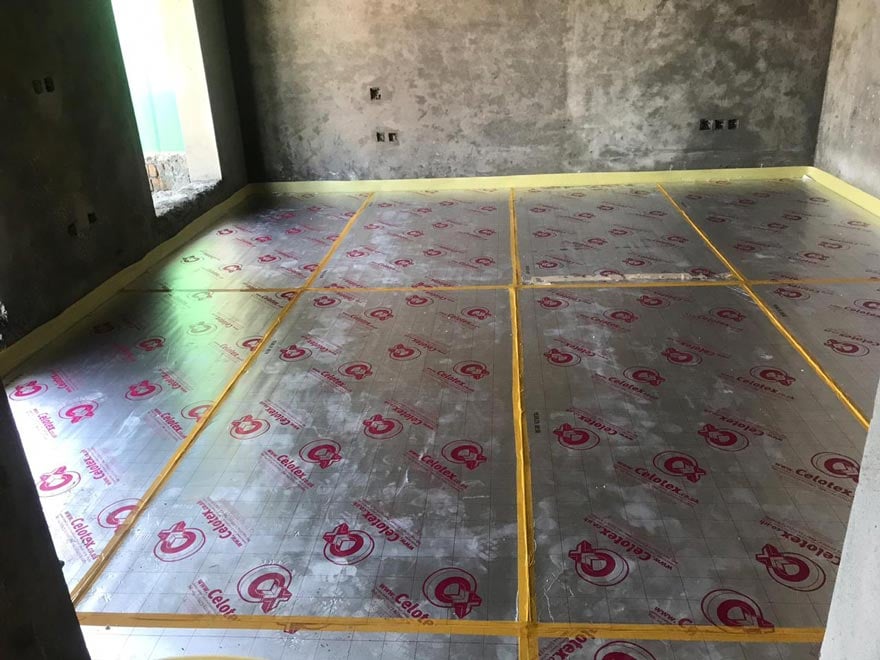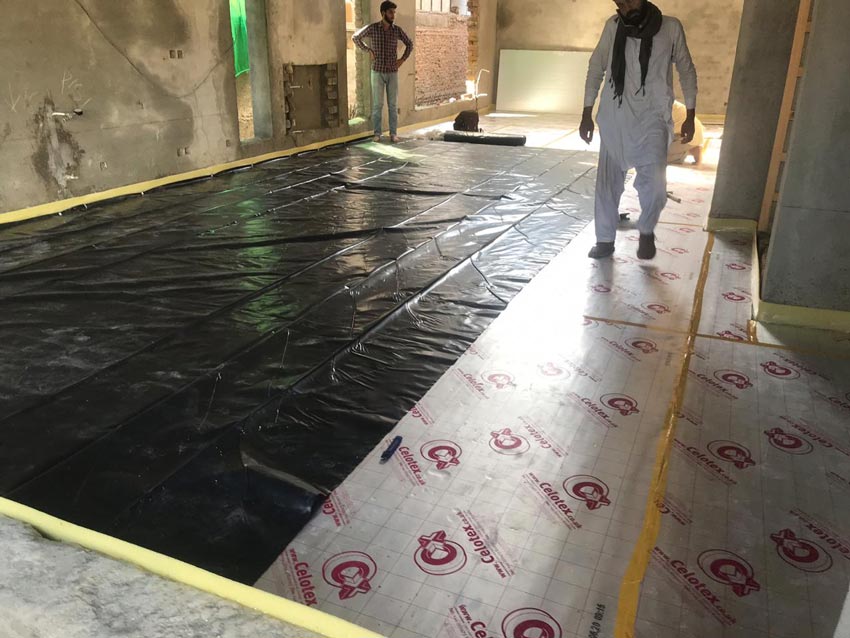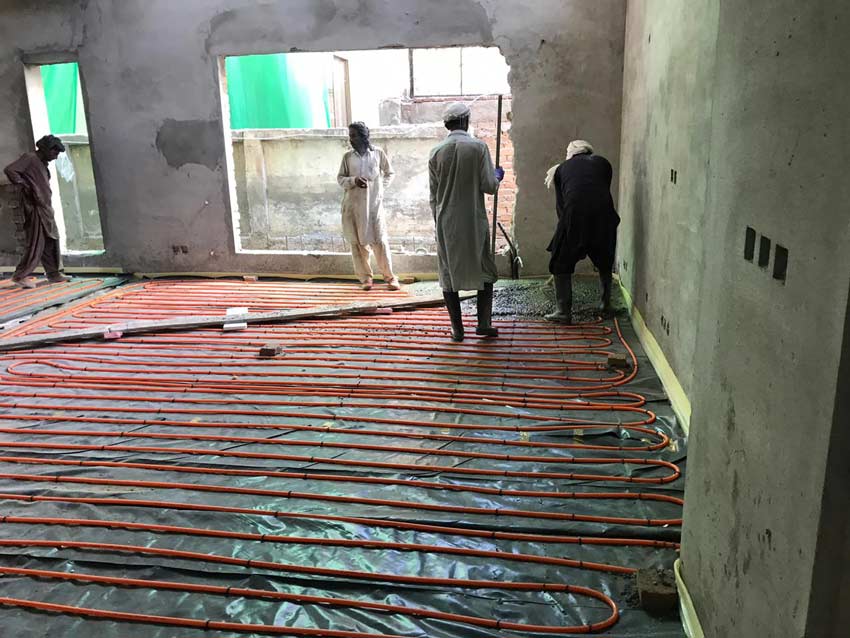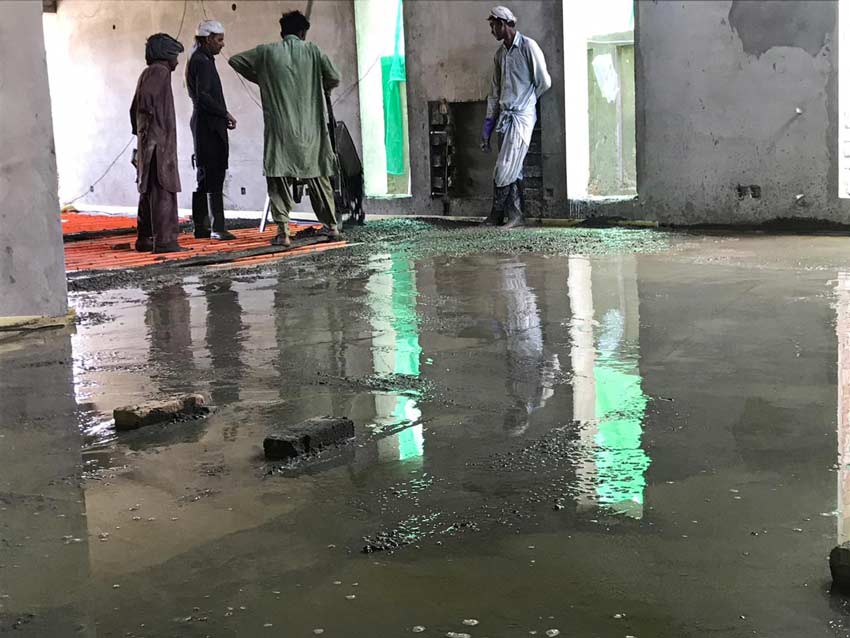It is safe to say there is hardly any aspect of modern living that has not been impacted by technology. Such technological advancement has also transformed aspects of the construction landscape. Tasks that once took months to complete are now wrapped up within days without compromising on quality or precision. Here are some examples: remote-controlled drones fitted with cameras help in surveying sites, digital blueprint apps enable architects to map out projects and computer-aided design (CAD) software result in detailed three-dimensional models for multiple purposes. The impact goes beyond the building stage as there are innovations that are easier for the homeowners to detect in their residence. From automated gate to remote lighting controls, such features add convenience in the life of the end-users.
The latest innovation in the sphere of construction in Pakistan is probably the addition of underfloor insulation to residential projects. Underfloor insulation is a sustainable and environmentally-friendly heating solution that keeps homeowners cozy while significantly reducing their energy bills. The underfloor heating system either uses an electric system or a hydronic system to heat the floor. The underfloor insulation acts as a protective layer under your feet by preventing air draughts between floorboards. In the hydronic system, one can opt for either bulk insulation or foil insulation, the former one has been widely used in modern house designs. Underfloor insulation not only helps in reducing the bills but also prevents heat loss. The insulation helps in retaining the heat and impede temperature changes. Lastly, underfloor insulation creates a vapor barrier and reduces moisture as a layer of insulation between the floor and crawl space prevents moisture from seeping into the floor.
Here is a step-by-step guide on how to install underfloor insulation:
Step 1: Setting up the Foundation

First off, the team must make sure that the floor surface is free of dust and debris. The next step is to prime the surface with a suitable primer before installing the thermal insulation board. Rigid polyisocyanurate (PIR) foam insulation board acts as a barrier that traps the heat and pushes it upward towards the floor’s surface.
Step 2: Waterproofing the Surface

Once that is done, the next step is to use waterproof tape to seal the thermal insulation sheet. A tight seal prevents heat loss in the downwards direction. After carefully sealing the first layer, a polythene membrane is laid down that prevents possible leakages.
Step 3: Installing PVC Pipes

After that, PVC pipes are laid down in a serpentine arrangement. This particular layout allows for uniform distribution of heat with minimal loss. The water is warmed up to 50 degrees celsius and circulates at a safe, low pressure through a closed-loop heat system.
Step 4: Final Stage

Lastly, the upper slab of the surface is created using PPC concrete. This is the floor’s uppermost layer. The finishing touches are made after the slab mixture has been completely poured in. This usually involves the installation of either marble or wood.
Take Note!
The hydronic system is most suitable for buildings undergoing construction in Islamabad and the adjoining areas.
In order to ensure that underfloor insulation is effective the architects need to keep the following points in mind:
• They must carefully consider which type of insulation works well for the residential project.
• Bulk insulation works well in colder climates whereas reflective or foil insulation is more effective in warmer climates.
• The R-value of PVC pipes is an important indicator that impacts the effectiveness of underfloor insulation. It measures the material resistance to heat flow. A higher R-value means greater resistance to heat transfer thereby resulting in more effective insulation and substantial energy savings.
• During the installation phase, it is necessary to ensure that underfloor insulation is firmly secured by tape. This makes certain that there is no air gap between the bottom of the floor and top of the insulation.
All of these precautions ultimately result in the creation of a well-insulated, climate-proof modern home in the very heart of Pakistan.